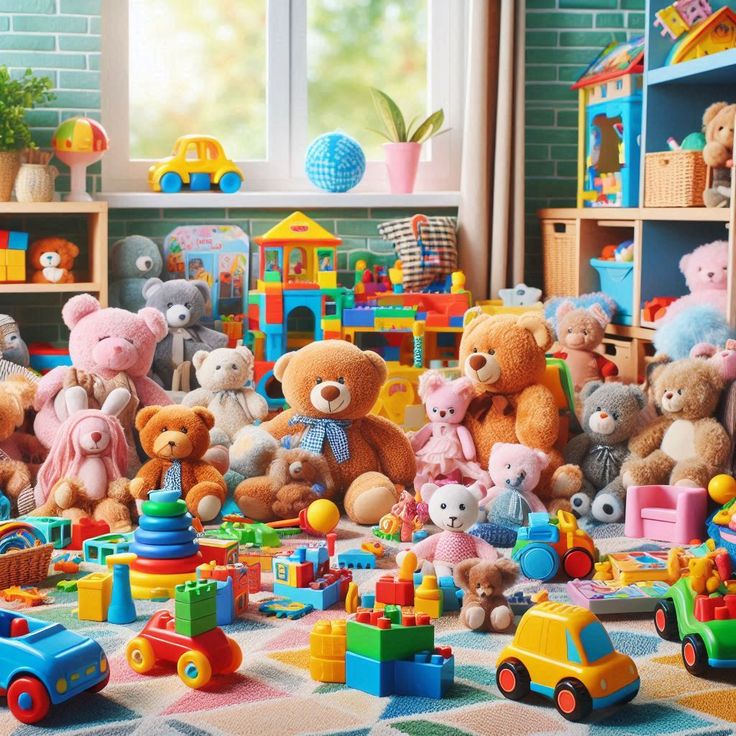The 2025 Smart Parent's Guide to Saving on Kids' Products, Toys & Learning Tools
By Halie Johnson | Published on April 25, 2025 | Estimated 7 min read

A Comprehensive Strategy to Economize on Children's Necessities by 2025
Every parent has been there—staring blankly at the price tags in children's stores, astonished at how quickly things add up: toys, clothes, learning tools, each item feeling like a small fortune. Prices are climbing, needs are evolving, and there's always that nagging fear that the toys purchased today might end up forgotten tomorrow. You want the best for your kids without overspending—but how?
Don't worry—you're definitely not alone. The good news? With the right strategies and a clear understanding of upcoming trends, saving significantly by 2025 can be within your reach.
Understanding The Landscape of Kids' Products, Toys, and Learning Tools Market
Before jumping into savings tips, let's briefly navigate today's market realities so you can make the smartest decisions going forward.
Predicted Market Changes in Kids' Products
Experts point to sustainability and safety as the top priorities shaping future children's products. By 2025, expect many brands to adopt eco-friendly materials and safer manufacturing processes. But here's the catch: sustainability often comes with a slightly higher upfront cost—but you'll soon see why it pays off financially in the long run.
Projected Evolution in Children's Toys
The toy industry is evolving rapidly due to technological advancements. By 2025, augmented reality (AR), interactive toys, and customizable smart-toy experiences are expected to become mainstream.
For example, toys like Osmo Kits—interactive games incorporating physical objects with tablet screens—are already paving a path towards personalized playtime. By investing wisely and understanding these trends, you'll pick toys your kids genuinely love while avoiding short-lived impulse buys.
The Future of Learning Tools
Learning tools are being revolutionized by technology too. By 2025, personalized education platforms tailored to specific learning styles, immersive AI-driven experiences, and user-centric educational applications are expected to dominate.
Consider tools like adaptive learning apps (e.g., Khan Academy Kids or ABCmouse). By knowing what's ahead, you make decisions that hold substantive value—ensuring money allocated toward learning tools translates into lasting developmental growth for your child.
Money-Saving Strategies While Shopping for Kids' Products
Now you're up-to-speed with where the market's headed. Let's explore practical strategies to ensure you stretch every dollar spent.
Smart Buying: Seasonal Sales, Discounts, and Coupons
Timing your purchases goes a long way. Stores and e-commerce platforms consistently offer sales during specific periods—back-to-school promotions, holiday clearance, and end-of-season discounts.
One parent, Jenna, shares her tactic: "I create a shopping calendar. During January, I stock up on winter clothing for next year at huge discounts. For big-ticket items, like strollers or car seats, I wait for Black Friday and Cyber Monday."
Coupon apps and browser extensions (like Honey or RetailMeNot) can save you substantial sums just by automatically finding deals at checkout—no hassle, all savings.
Investing in Quality Over Quantity
Choosing well-made products might seem pricier initially, but quality goods often outlast cheaper counterparts, ultimately saving money long-term. Quality-built wooden toys from brands like Melissa & Doug, for instance, have lasting durability, passing from sibling to sibling or even generation to generation.
Prioritize items providing more extended usability—items like adjustable furniture or car seats that grow with your child. These reduce annual spending and increase your long-term savings.
Comparing Online and In-Store Shopping for Kids' Products

The modern parent shopping experience is split between digital "scrolling and clicking" and physically strolling store aisles. Which offers the best savings? Let's explore both.
The Pros and Cons of Online Shopping
Online shopping offers unmatched convenience, wider product variety, and easy price comparisons—terrific for busy parents needing last-minute savings. Subscribe to retailer newsletters or loyalty programs, enabling alerts for flash sales and promotions.
The downside? Online purchases sometimes come with shipping costs or waiting periods. Also, certain products (like clothing or shoes) might require involving returns or exchanges if sizing is off.
The Advantages and Disadvantages of In-Store Shopping
Physical stores allow you a tactile experience—no guessing around sizes or quality. Additionally, items like clothing, bicycles, or protective gear can be immediately evaluated and tested.
On-site negotiations with store managers sometimes lead to unexpected discounts, especially for floor models or slightly damaged packages. However, staying mindful of impulse buys is vital to avoiding overspending in-store.
Making Use of Subscription Services and Membership Clubs
Subscription and membership services are increasingly popular among savvy parents wanting predictable budgeting and recurring savings.
The Benefits and Drawbacks of Subscription Services
Subscription services like KiwiCo (monthly educational toy boxes) or diapers and baby essentials subscriptions on Amazon offer convenience and predictable budgeting. You'll often find these services cheaper per item versus single retail purchases.
The caveat: monitor subscriptions carefully to avoid accumulating items faster than you need. Regular reviews and strategic frequency adjustments help maintain genuine savings.
Understanding Membership Clubs and Their Potential Savings
Wholesale clubs (Costco, Sam's Club, BJ’s) offer bulk buying discounts significantly reducing per-unit prices for essentials like diapers, wipes, food, and formula.
Family memberships often pay for themselves quickly, especially if consistently used for staple products. Just make sure you're accessing the benefits enough to offset the upfront membership fee.
Using Second-Hand and Recycling Options
Second-hand shopping is increasingly popular for good reason—it’s affordable, environmentally friendly, and increasingly accessible.
Platforms like Facebook Marketplace, Once Upon A Child stores, or thrift apps like ThredUP offer quality second-hand products at attractive prices. Items like durable toys, gently used clothes, and furniture are typically big savings opportunities.
A reminder for cautious buyers: Always closely inspect secondhand products for safety standards and potential recalls. Doing research on sellers and products keeps this option safe and budget-friendly.
Conclusion
Saving money on kids' products, toys, and learning tools isn't about sacrificing quality or joy—it's about pursuing smart, informed spending. By taking advantage of seasonal discounts, choosing durable products, embracing digital shopping, considering subscription models, and confidently choosing secondhand, you're setting yourself—and your family—up for financial success.
Ultimately, it's about gaining control of your budget while still nurturing your children's growth, wonder, and learning. So, gear up, get strategic, and enjoy the confidence that this comprehensive plan can help you save big by 2025 and beyond.
Have a favorite strategy or tip you swear by? We'd love to hear your experiences in the comments below!
Frequently Asked Questions (FAQs)
Q: Are subscription boxes actually cost-effective for parents?
A: They can be—especially when providing tailored educational experiences or frequent necessities (like diapers) cheaper than single-purchase retail prices. Just ensure your subscription cadence matches your child's actual usage to make the most of them.
Q: How do I verify safety standards of secondhand kids' items?
A: Check for recalls through platforms like the Consumer Product Safety Commission (CPSC). Plus, always examine product conditions yourself for wear, tear, or damage prior to purchase.
Q: How can parents effectively plan ahead to maximize sales?
A: Create shopping calendars for predictable seasonal discounts. Establish alerts or reminders ahead of upcoming sale events (like back-to-school, Black Friday, holiday clearances).
"I've saved hundreds just by joining my local mom's group—we exchange gently used kids' clothes every season, completely free!" — Sarah J., mom of two.
Ready to start saving smarter today? Explore these strategies, give them a try, and let us know what works best in your parenting journey!
Maybe You're Interested In Shopping At These Stores
About the Author: Halie Johnson
Halie Johnson is a Marketing Manager and the founder of RetailReviewHub, where she combines over a decade of experience in affiliate marketing and deal hunting to help users save money with confidence. With a deep understanding of consumer behavior and pricing strategy, Halie is dedicated to writing clear, unbiased product reviews and sharing the best deals across the web. When she’s not digging through coupon databases or analyzing offer performance, she enjoys testing products first-hand and writing savings guides that actually work. Follow Halie on her journey to smarter shopping!
Related Posts

Top Independence Day Deals 2025 – Save Big with Verified Coupons at RetailReviewHub
Independence Day is a prime time for shoppers to find great discounts...

Score Explosive July 4th Discounts – Curated Offers on RetailReviewHub
Independence Day 2025 brings a great chance to save on many products w...